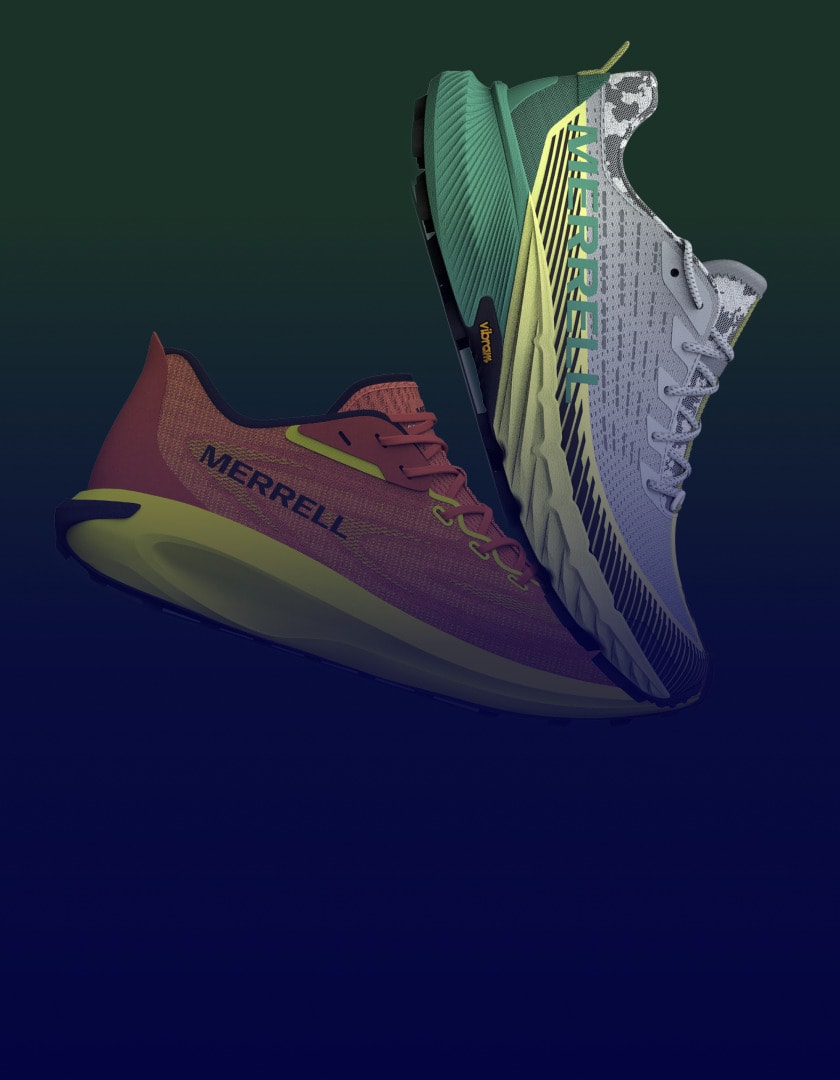Fashion Product Development for Modern Brands

The opportunities for fashion brands and retailers to thrive in today’s market are nearly endless—but so are the challenges. In a post-pandemic fashion industry, global supply chains are often fragile, and finding reliable suppliers and vendors is an ongoing obstacle.
But for brands willing to adapt to quickly changing trends, consumer behaviors and markets, the fashion industry offers plenty of room for innovation and improved product development—especially for companies willing to embrace emerging technologies.
In a 2024 report, 48% of surveyed consumers aged 18 to 29 said they follow fashion trends to some degree. For brands and retailers looking toward the future, then, it’s essential to align their own product development decisions and processes with engaged and informed audiences.
In this article, we’ll explore some key strategies that brands, retailers, and manufacturers can leverage to optimize fashion and apparel product development for sustainability and long-term financial growth.
What Is Sustainable Fashion Product Development?
Fashion product development refers to the complete process of bringing a new clothing item or accessory to market, from concept design to production and distribution.
When sustainability is integrated into this process, it involves incorporating eco-friendly practices at every stage—sourcing sustainable materials, reducing waste, and ensuring ethical production.
Sustainable fashion product development is critical for brands today. Consumers are increasingly concerned with the environmental impact of their clothing purchases, and government regulations are growing stricter around carbon emissions, resource depletion, and waste.
Brands that fail to adopt sustainable practices risk falling behind their competitors, both in the market and in consumer perception. With sustainability becoming a priority, fashion brands need tools to help streamline their product development processes while achieving their environmental goals.
Why Sustainability Matters in Fashion Product Development
The traditional fashion industry has long been criticized for its environmental footprint—and rightly so. According to Earth.org, each year 100 to 200 billion pieces of clothing are sold globally, and much of that comes from factories, transportation systems and other processes that affect the environment.
It is responsible for significant carbon emissions, water pollution, and textile waste. Fast fashion, in particular, exacerbates these problems by encouraging overproduction and short product life cycles, leading to a high volume of unsold goods and waste. Earth.org also claims that fast fashion
Sustainable fashion product development seeks to address these issues by minimizing environmental impact. This includes using eco-friendly materials, reducing water and energy consumption during production, and implementing practices that prevent overproduction.
Competitive Advantage of Sustainable Practices
Sustainability offers a significant competitive advantage in today’s market. Consumers are willing to pay more for products that are ethically produced, environmentally friendly, and transparent about their origins. Brands that adopt sustainable practices can differentiate themselves from competitors, building stronger customer loyalty and enhancing their reputations.
Moreover, sustainable fashion is becoming more than just a trend—it is shaping the future of the industry. Brands that fail to embrace sustainability risk being left behind as consumers and regulators demand more responsible business practices.
Key Elements of Sustainable Fashion Product Development
Sustainability in fashion starts with conscientious design and sourcing. Brands that prioritize sustainable product development begin by selecting eco-friendly materials, such as organic cotton, recycled polyester, and biodegradable fabrics. Choosing materials that have a lower environmental impact reduces the overall footprint of the product and supports the circular economy.
Additionally, sustainable design considers the durability and longevity of a garment. Creating high-quality, timeless pieces that can be worn for years helps reduce the demand for frequent replacements and minimizes waste. This shift away from fast fashion encourages consumers to invest in fewer, better-quality items.
Sustainable design also incorporates the concept of “design for end of life,” meaning that products are created with recycling or upcycling in mind. By designing garments that can be easily disassembled and repurposed, brands contribute to a circular fashion system.
Supply Chain Transparency
A sustainable fashion product development process relies on a transparent and ethical supply chain. Consumers want to know where their clothes come from and how they are made.
Brands that provide this level of transparency can build trust with their customers and ensure that their products are produced in an environmentally and socially responsible manner.
Supply chain transparency involves working closely with suppliers to ensure that materials are sourced ethically and that labor practices are fair. It also includes tracking the environmental impact of each stage of production, from raw material extraction to manufacturing and transportation.
To achieve this, brands need to build strong relationships with their suppliers, monitor sustainability certifications, and regularly audit their supply chains for compliance with environmental and ethical standards.
Supply chain transparency not only improves sustainability but also helps brands avoid risks related to unethical practices and regulatory violations.
Technology in Sustainable Fashion Development
Technology plays a crucial role in optimizing fashion product development, particularly when it comes to reducing waste.
Digital tools such as 3D design software and virtual sampling enable brands to create and test designs without the need for physical prototypes. This not only speeds up the design process but also minimizes the waste associated with creating samples that may never go into production.
By using digital tools, brands can quickly iterate on designs, make adjustments in real-time, and share ideas across teams, reducing the risk of errors and unnecessary production. Virtual sampling allows for faster approvals and decision-making, leading to a shorter product development cycle and reduced time to market.
Digital technology also supports sustainable sourcing by enabling brands to track the environmental impact of their material choices, compare different options, and make data-driven decisions that align with their sustainability goals.
All-in-one platforms, like product lifecycle management software, can help brands integrate and enhance all their technologies and processes in one place, making it easier to manage processes with varying degrees of technological complexity.
Data-Centric Decisions for Sustainable Sourcing
Sustainable sourcing requires careful consideration of both environmental impact and supply chain performance. Data-driven decision-making helps brands choose suppliers that align with their sustainability values, reducing the risk of unethical practices or environmentally harmful materials entering the supply chain.
Data analytics tools enable fashion brands to evaluate suppliers based on a variety of factors, including sustainability certifications, carbon footprint, and material availability.
By using data to guide their sourcing decisions, brands can optimize their supply chains for both efficiency and sustainability, ensuring that they meet consumer demand while minimizing their environmental impact.
Challenges in Sustainable Fashion Development
One of the biggest challenges in sustainable fashion product development is balancing cost with sustainability. While eco-friendly materials and ethical production processes can be more expensive, brands can mitigate these costs through careful planning and the use of technology.
For example, digital tools can reduce the costs associated with prototyping and sampling by allowing brands to create virtual designs. Additionally, optimizing supply chain operations and reducing waste can lead to cost savings in other areas, offsetting the higher cost of sustainable materials.
Brands can also adopt a “less is more” approach, focusing on creating high-quality, long-lasting pieces that may have a higher upfront cost but ultimately provide better value to consumers and reduce the environmental burden of overproduction.
Navigating Global Regulations
As sustainability becomes a global priority, fashion brands must navigate a complex web of regulations related to environmental impact, carbon emissions, and ethical labor practices. Keeping up with these regulations can be challenging, especially for brands operating in multiple regions with different regulatory requirements.
To stay compliant, brands need to implement systems for tracking and managing regulatory changes across their supply chains. This includes monitoring supplier practices, ensuring that materials meet sustainability standards, and regularly auditing production facilities for compliance.
Staying ahead of regulations not only helps brands avoid penalties but also positions them as leaders in sustainable fashion. Brands that proactively meet or exceed regulatory requirements can gain a competitive advantage in the marketplace.
Reducing Product Development Time
Product lifecycle management (PLM) solutions are essential for fashion brands looking to reduce time to market by streamlining workflows, improving collaboration, and providing real-time visibility. PLM platforms centralize product data in one location, allowing design, sourcing, and production teams to collaborate efficiently and eliminate communication silos. This leads to faster decision-making and fewer delays.
Digital prototyping and 3D design tools within PLM systems enable brands to create virtual samples, reducing the need for costly, time-consuming physical prototypes. Real-time updates allow teams to make design adjustments quickly and secure approvals faster, speeding up the development process.
PLM solutions also integrate supply chain data, giving brands visibility into material availability and lead times, enabling better coordination with suppliers. Workflow automation, such as updating BOMs and tracking compliance, frees up time for teams to focus on strategic tasks, while real-time reporting and insights help brands monitor progress and make data-driven decisions.
By optimizing collaboration, digitizing sampling, and improving supply chain integration, PLM solutions significantly reduce development timelines, allowing brands to launch products faster while maintaining high standards of quality and sustainability.
Transform Your Product Development Efficiency
Sustainable fashion product development is the future of the industry. By optimizing product development processes, reducing time to market, and integrating sustainability at every stage, fashion brands can meet the growing demand for eco-friendly, ethically produced garments.
Brands looking to integrate their processes into one “single source of truth” platform can speed up their products’ time to market and increase margins by investing in a product lifecycle management platform designed specifically for their needs.
At Centric Software®, our agile, AI-driven solutions are customized to fit your brand’s needs and integrations.








